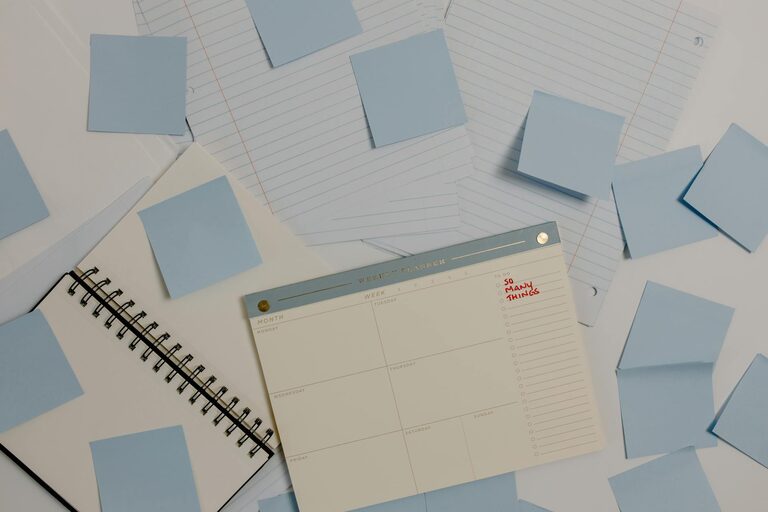Bullet journaling has become a popular method to help people organize their daily tasks, track goals, and unleash creativity—all in one simple notebook. If you’re new to this approach, it might seem a little overwhelming at first. But don’t worry! This beginner guide will walk you through everything you need to get started and make the most of your bullet journal.
What Is Bullet Journaling?
Bullet journaling, often called the “BuJo,” is a customizable planning system created by Ryder Carroll. It combines elements of a to-do list, planner, diary, and sketchbook into a single notebook. The idea is to use bullet points, symbols, and simple layouts to organize your thoughts, tasks, and appointments.
Unlike traditional planners, bullet journals aren’t limited to a fixed format or structure. You build the system to fit your lifestyle, preferences, and goals. This flexibility makes bullet journaling accessible whether you want simple organization or a creative outlet.
What You’ll Need to Get Started
Starting a bullet journal doesn’t require fancy tools. Here’s what you’ll need:
– Notebook: Many people prefer dotted notebooks because the dots give structure without being too intrusive. However, lined, grid, or blank notebooks work well, too.
– Pen: A smooth, reliable pen that you enjoy using. Some use fine liners, gel pens, or markers.
– Ruler (optional): For drawing straight lines and neat layouts.
– Colored pens or markers (optional): To add color and highlight important items.
– Stickers or Washi Tape (optional): For decoration and personalization.
Remember, the goal is to keep it simple. You can always add more tools over time.
Bullet Journal Fundamentals: Key Concepts and Symbols
At the core of bullet journaling are a few simple symbols and structures that help keep your entries clear and consistent.
The Basic Symbols
– Task: Represented by a simple dot (•). For example, • Buy groceries.
– Event: Represented by an open circle (o). For example, o Dentist appointment.
– Note: Represented by a dash (–). For example, – Remember to call Mom.
– Completed: Mark a completed task with an “X” over the dot (X).
– Migrated: If a task shifts to another day or list, use a “>” symbol.
– Scheduled: If a task moves to a future date, use a “<” symbol.
These symbols help you track what needs to be done, what’s happened, and what’s important.
Main Sections
The bullet journal usually includes several sections:
– Index: A list at the front that helps you quickly find pages.
– Future Log: An overview of upcoming months to plan long-term events.
– Monthly Log: A calendar-style page to track dates and monthly goals.
– Daily Log: Daily to-dos, events, and notes.
– Collections: Special lists or trackers, such as books to read, habits, or meal plans.
Step-By-Step: Setting Up Your Bullet Journal
1. Create the Index
Reserve the first few pages for your index. Write “Index” at the top and leave space to add page numbers and topics as you go.
2. Set Up Your Future Log
Divide 2-4 pages into sections for upcoming months. This is your place to jot down events and deadlines that are coming up but not for the current month.
3. Make the Monthly Log
Start a new page for the month. On one side, list the dates with the day of the week, and on the other, write your monthly goals or important tasks.
4. Start Your Daily Logs
Each day gets its own entries. Use the date as a heading, then jot down tasks, events, and notes with the bullet symbols.
5. Add Collections
Create special lists or trackers anywhere in your journal. For example:
– Habit tracker to monitor daily exercise.
– Book list to keep track of books you want to read.
– Meal planner for weekly meals.
– Expense tracker to keep an eye on spending.
Just be sure to add these collections to your index!
Tips to Keep Your Bullet Journal Effective and Fun
– Keep it simple: You don’t have to decorate every page or spend a lot of time on layouts. The journal should serve you, not stress you.
– Use symbols consistently: Stick to your chosen symbols so your system stays clear.
– Review daily: Spend a few minutes each day updating your logs and migrating unfinished tasks.
– Customize as you go: Experiment with different layouts and trackers to see what works best.
– Incorporate creativity: Doodles, stickers, and colors can make journaling enjoyable without being complicated.
– Use it regularly: Consistency is key to making the bullet journal a helpful tool.
– Be flexible: It’s okay to adapt or change your system if it’s not working for you.
Common Bullet Journaling Mistakes to Avoid
– Overloading pages: Too many tasks or events can make your journal cluttered and hard to read.
– Not migrating tasks: Forgetting to move incomplete tasks wastes time and may cause missed deadlines.
– Comparing to others: Your bullet journal should reflect your needs, not social media trends.
– Neglecting the index: Without keeping the index updated, it’s harder to find what you need.
Final Thoughts
Bullet journaling is a flexible, powerful way to organize your life while expressing your creativity. Starting simple and building your system over time helps ensure it’s sustainable and enjoyable. Whether you want to track your goals, plan your days, or just have a space for notes and ideas, the bullet journal can be a great companion.
Give it a try with a simple notebook and pen today—you might find that this personalized planner helps you stay focused, productive, and inspired every day. Happy journaling!

